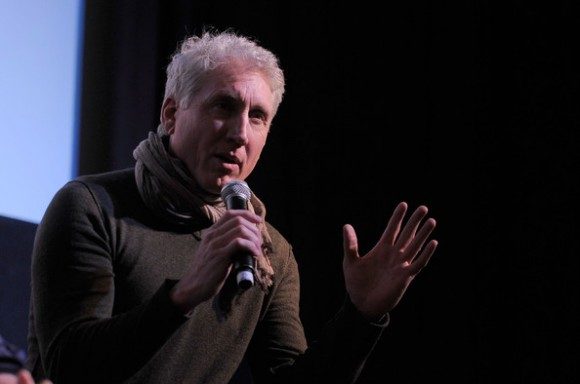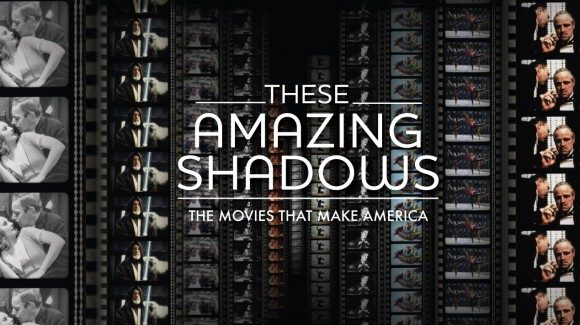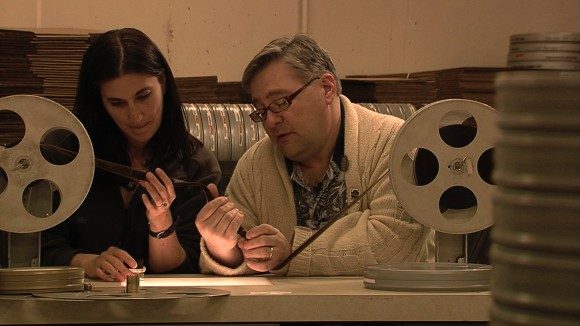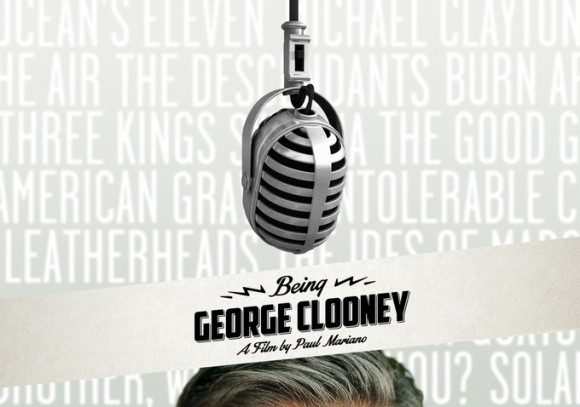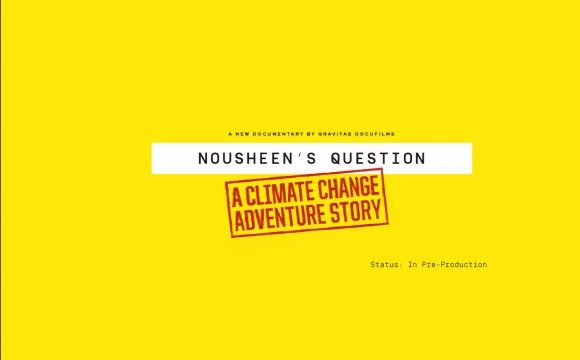Film is an art form based in technology and as technology changes, so does the art. Looking back at the 20th century, one can chart the progress of science and industry by looking at the films of the time. In recent years, the advent of digital cinema cameras forever changed the way films are made, while the internet has changed the way they are distributed, and now funded. Crowdfunding sites like Kickstarter and IndieGoGo have become popular resources for the funding of independent films.
One film looking to Kickstarter is Being George Clooney, the latest documentary from Paul Mariano, who directed These Amazing Shadows with Kurt Norton, who is producing this latest film. I was able to speak with Kurt about his experience making films in the digital age, both as the director of These Amazing Shadows, and producer of Being George Clooney.
JW: What made you want to make a film about the National Film Registry?
KN: Actually it was Paul [Mariano] who noticed an article in the New York Times. This is back in about 2007. The article was about the National Film Registry, and he called me up and asked me if I’d ever heard of it, and I said no. We were fascinated by this whole section of the Library of Congress that’s devoted to film.
JW: I know that a big point in These Amazing Shadows is the idea of the importance of film preservation. Is that something you had feelings about going into documentary or something you discovered throughout the filmmaking process?
KN: Early on we were told by the Library of Congress that 90% of the films created before 1920 in the silent era no longer exist in any form, and half the films made before 1950 also don’t exist in any form. And that kind of loss, to us, was unimaginable. You look around now and everything is digitized, and everything is at the DVD store, and everything is online. So you start to think that everything is available and somebody out there is doing the work to preserve it, and it turns out that has not been the case during the 20th century.
But as we went in went into the story, we moved a little bit away from the central issue of preservation to the power of movies. The more we interviewed people, what we discovered was the effect that movies have had on our culture, and how the movies have reflected back that culture to ourselves. It’s a great mirror for all of our fantasies and all of our failings and all of our successes and all of our dreams.
JW: One of the things that I found most striking about the National Film Registry was the variety of different kinds of films that were represented. I remember back in 2009 when they announced that Michael Jackson’s Thriller was being added to the registry, it made me go back and take a closer look at the list. What about the list did you find most surprising?
KN: When I was a young man, I made a short film and it played in some film festivals around the country. And every time it would play in a festival, I noticed that the winning film was a film called Frank Film. That year, Frank Film went on to win the Academy Award for best short film. Many years later, we’re going through the National Film Registry as a part of this film and there on the registry is Frank Film. And because of it being included, I was able to see it. Somebody had preserved it, somebody had taken care of it, and somebody had made it available. And so I was finally, after more than 30 years, able to see this film that was vexing me. And I thought, how good can it be? Turns out it was pretty good.
We reviewed a lot of films that we were already aware of, Hollywood films like It Happened One Night. I adore that film and I particularly adore Claudette Colbert, but what we started to notice in seeing films like that was the casual racism in American films. When you really look at these films carefully, you start to see America from a different view, not just an audience member wanting to be entertained. I saw a lot of casual racism in so many films and it made me wince. I started to realize, this list of films is more than just a bunch of movies. It really does reflect changing tastes, changing attitudes, a changing America, in a way that we can’t turn away from and can’t forget. These films preserve our country’s attitude and culture in a way that almost nothing else does.
JW: I know a lot of cinephiles liken movie watching to a religious experience; that’s something I think is mentioned in the film. But now the way we watch movies is changing. People are watching movies on their laptops and phones instead of in a movie theatre. Do you think that’s having an impact on film culture?
KN: I think that every ten years we seem to fret over losing the idea of what movies are, how we watch them, and what they mean to us. I think that we just keep being reminded that films, in their basic essence, are here to stay. What’s most important is storytelling and connecting to people on an emotional level. And if you watch it on an iPhone and you have an emotional experience, then more power to you. I think that’s great. I think the optimal way to do it is in a great theatre, a shared experience. But as a filmmaker you know that once you make a film and you put it out into the world, you have no control over how people watch it.
JW: If the way people are watching films is changing, the way people are making films might be changing even more. There’s a lot talk about the switch from film to digital. What do you think about the impact that’s having from a preservation standpoint?
KN: Digital is wonderful but it’s also the enemy, because people generally feel that digital has solved all the problems of preserving and archiving films. In a way we’re all archivist now, because we all have DVDs, and we all have hard drives that have films that we’ve made, or we’ve downloaded, or that we’ve pirated (laughs) or whatever. But the problem with digital is that we don’t know how long these things last. If you compare it against archiving on film, the actual film stock is a much more durable and predictable and stable archiving material than digital will be in the next 30 years. If you store film in a dry, cold environment, it can last 500, 800 years. In digital, we’re always changing the format, and things fail. Really, film, at this moment, is the best medium for archiving our film heritage.
When it comes to restoration, then digital tools are a godsend. I think we’re in the golden age of film restoration because every year new tools come out that allow film restorationist to bring old films back to their opening night quality, and that’s a fantastic thing.
JW: Digital production is certainly cheaper than film production, and in a way that’s democratized the industry and made it possible for filmmakers to do things they wouldn’t otherwise be able to do. Has the ability to shoot digitally affected your work? Would you be able to make the films your making if you had to contend with the costs of shooting film?
KN: The playing field has been leveled from an economic standpoint, particularly for documentary filmmakers. You’re always carrying your equipment and running around and with lightweight equipment and the ability to shoot continuously for two or three hours without changing up a film reel is an incredible advantage. So from a documentary standpoint it’s really changed things. However, I think you can be easily fooled into thinking that helps you create good films.
I think video gives people like them more of an opportunity to practice their craft and their art. You can crank out more films and practice and practice and practice. Which is one of the reasons the Golden Age in Hollywood occurred. Because all those incredible artists that came out of the Golden Age of Hollywood made a bazillion films. That was the studio system. They had the opportunity to fail and the opportunity to experiment, and they made a lot of bad films before they finally made some good ones. And I think that’s one of the advantages that digital provides. It provides young filmmakers the chance to experiment and make lousy films until they’re ready to make good ones.
JW: So the current film you’re working on, Being George Clooney, is about the process of audio dubbing. What drew you to that aspect of filmmaking?
KN: It’s undeniable that the international box office is critical to any Hollywood film. We’re becoming such a global marketplace and a global culture. One of the issues we discovered in These Amazing Shadows is this notion of American culture being exported to the world. So many cultures are influenced by the way we talk, the way we dress, our attitude. Looking into it, we discovered the countries take our films and change them in a way, because they dub the Hollywood actors that we all know and love. By dubbing them, they change dialog, they change attitude, they change jokes. They adapt it to local needs. We thought that was really fascinating. Humans are so amazing at making things our own, no matter how foreign or different they are, we find ways of adapting and making them emotionally relevant to our lives.
JW: The subtitle / dubbing debate is something that people are really passionate about. Is that something you had an opinion about going in?
KN: Paul and I both had a feeling that we’d both rather see a film with subtitles, because we want to hear the authentic performance of the original actor. And we wondered what would it be like to grow up in a culture where dubbed films are the norm. We read stories about people growing up with a dubbed version of John Wayne, or Woody Allen, and then coming over to the United States and hearing John Wayne or Woody Allen’s real voice and being horrified and thinking that the dubbed voice was much better.
In Germany, many young people are learning English. So a new generation is coming up and they would rather see films subtitled and watch the original performance in English. In Italy, it’s the opposite. Not as many young people are learning English and they need and want films to remain being dubbed. They want their language protected. So a way to keep English out is to maintain films being dubbed. It’s different all over the world.
JW: Funding is another aspect of filmmaking that’s changing because of the internet. You’re partially funding your film through the crowdfunding site Kickstarter. What drew you to that site and how has the experience been so far?
KN: Making a good film is really hard. Marketing a film is even harder, and fundraising is the hardest of all. Every filmmaker, no matter how successful you are, you’re still looking for funding. One of the advantages of crowdfunding is that if your film is constructed to appeal to a certain community, you can tap into that. We felt like crowdfunding was appropriate for our film because we could tap into some very specific communities. So I think you have to look at crowdfunding from that standpoint. Can you appeal to a specific community?
So far our experience has been really great. It’s been really challenging to get people to give you money, and it’s really challenging and humbling to ask people for money. It’s really humbling. But generally speaking, people like to help projects that they are interested in. It gives them a great opportunity to become part of a project and become part of this insider family or community around a project, and I think it’s a good thing.
JW: I think people like to say that digital cameras are what democratized filmmaking but it seems to me that crowdfunding is, in a way, the embodiment of democratizing film. Fans get to help the films that they want to see get made. Is crowdfunding changing the way films are financed, or is it just another tool for filmmakers?
KN: I think your right about the democratization of filmmaking. It’s so early in the process right now for crowdfunding that I’m a little bit hesitant to make a proclamation about what it means. A lot of people who couldn’t get funding for their film now can and that can only be a good thing. I think a lot of films don’t get funded, and that’s a great lesson for filmmakers who are aspiring to become relevant to our culture. They put themselves out there and ask for money and they don’t get the money they need. They learn from that experience and realize that filmmaking is half art and half business. If you don’t look at filmmaking that way, you’re being disrespectful to the resource of money. I think a lot filmmakers simply want to make films and not have to worry about how they’re going to pay for them. So, in this way, filmmakers can be really responsible for their audience and their money and how a film gets made from A to Z as opposed to hide from that aspect of it, which is the most challenging part, getting a film financed.
JW: Last year, Rob Thomas created a Kickstarter for a Veronica Mars film, based off the television series that he created. The fact that a larger, studio-backed film was turning to its fans for fundraising was troubling to a lot of people. Do you see the use of sites like Kickstarter and IndieGoGo by celebrities and bigger, studio-backed films as something that’s dangerous?
KN: My initial reaction to what Rob Thomas did, and what Zach Braff did, and what Spike Lee has done, was to be a little pissed off. Like, this is inappropriate for them. But the more I thought about it, I’m not so hardcore about that attitude anymore. If a studio is involved, it seems inappropriate because they’re abusing the spirit of what crowdfunding is all about. However, I think people like Rob Thomas and the Veronica Mars television program and Zach Braff and Spike Lee, they have really passionate communities around their work. Not only are their films funded, but they got far more than they asked for. So it’s clear that their audience was comfortable with this crowdfunding, and being a part of this whole system, knowing they weren’t profiting from this money they were giving. They weren’t investing, they were giving money. But people were more excited about being part of the process and about getting the film made, and having content out there that they specifically wanted to see. So, my heart goes out to those people who gave money.
But there is something kind of unseemly about a celebrity who has access to a lot of resources that the average filmmaker does not. But I also know that filmmakers, on any level are always looking for money. There are very few filmmakers out there who can simply decide to make a film. My heart goes out to any filmmaker that has a good idea and is able to get it funded however they can. It’s an elite art form in many ways, on that level because it’s so expensive. I’m both pissed off and sympathetic.
JW: To play devil’s advocate, do you think when people like Rob Thomas and Zach Braff use these sites, there could be a plus? It might make people more aware of platforms like Kickstarter and IndieGoGo and make people aware that there are films out there that need to be funded.
KN: That’s a good point that hadn’t occurred to me. We’re such a celebrity driven culture. Every time you work on a project, it always comes up in the conversation: is there a celebrity we can get involved in this? Because that’s what people respond to. So your point is really well taken that maybe the benefit is exposure. There’s the old saying, rising water lifts all boats. So when Zach Braff and Rob Thomas and Spike Lee get on, it helps all filmmakers, and everybody who want to have their project or idea or product or game funded.
JW: I know it’s an exciting time for Being George Clooney, but are there any other projects that you’re working on?
KN: Paul is directing Being George Clooney and I’m producing that along with Christine O’Malley and Rivkah Beth Medow. We are also working on a documentary about climate change. I’m directing that. It’s called Nousheen’s Question and it’s about a young girl (Nousheen Zoarder) in Bangladesh and her reaction to how climate change is severely affecting her country and what she’s prepared to do about it. So it’s a character driven documentary about climate change. It’s not another stupid-ass climate change movie about telling us that we’re all gonna die and showing us scene after seen of degradation. This is a very positive story. This is a voice that we don’t hear enough in our Western culture. The voice of a 19-year-old Bangladeshi girl who speaks three languages and is highly educated and highly motivated. She’s gonna go out and change the world.
JW: Was the lack of documentaries that give that positive spin one of the reasons you wanted to make this film? So we didn’t have to have another film with a lot of fear-based motivation?
KN: I’m so glad you said that. I think that filmmakers, when they make a film about climate change, they naturally think if they can scare their audience, because that’s a really strong emotion, that it will elicit action. My feeling is that fear does not motivate people, it makes people passive, and makes us behave based on our worst instincts. I wanted to make a documentary that had nothing to do with fear. However, climate change is kinda scary. But there are solutions to our problem. It’s not an insurmountable problem. Here’s this young woman who understands climate change, who understands the solutions out there, and understands what it takes to change the world in ways that so many Americans don’t. And we have the resources. We are the problem. Her country is not the problem and does not have the resources, but in an interesting way she understands the problem so much better than we do.
JW: Have you begun filming that or is that still in the preproduction stage?
KN: We just started filming in January and we’ll be going back, probably in April or May to shoot some more. After we finish shooting in Bangladesh, then we’ll travel with Nousheen around the world looking for solutions, finding solutions, talking with people and developing a story. It’s also the story of a young girl seeing the world for the first time, and seeing how wonderful the world is. I think in a lot of climate change documentaries you get a sense that it’s hopeless and the world is completely screwed up and most of the world is clueless, but I think it’s anything but that. We live on an incredible planet. We’re so lucky, my God we’re so lucky, and to have it change in a way that we would lose its beauty would be just horrible. So she’s gonna go out there and show us what’s possible. Hopefully people will be interested in her point of view and her journey. I think they will be.
I think people are motivated by other people. I do believe that some people are motivated by polar bears and the threat against polar bears, and glaciers and the arctic. I think those are necessary and useful to some people. But as a general proposition, I think most people are motivated by other people. If movies have told us anything, they’ve told us that we’re most attracted to the emotional stories of other people that we can understand and relate and learn from. That’s one thing I learned from These Amazing Shadows. Going through the registry, it’s clear that our most important stories are about people and their emotional journeys and there’s no reason you can’t take that and extend it to climate change.
JW: Well, thank you for bringing it full circle for me.
KN: (laughter) No problem.

